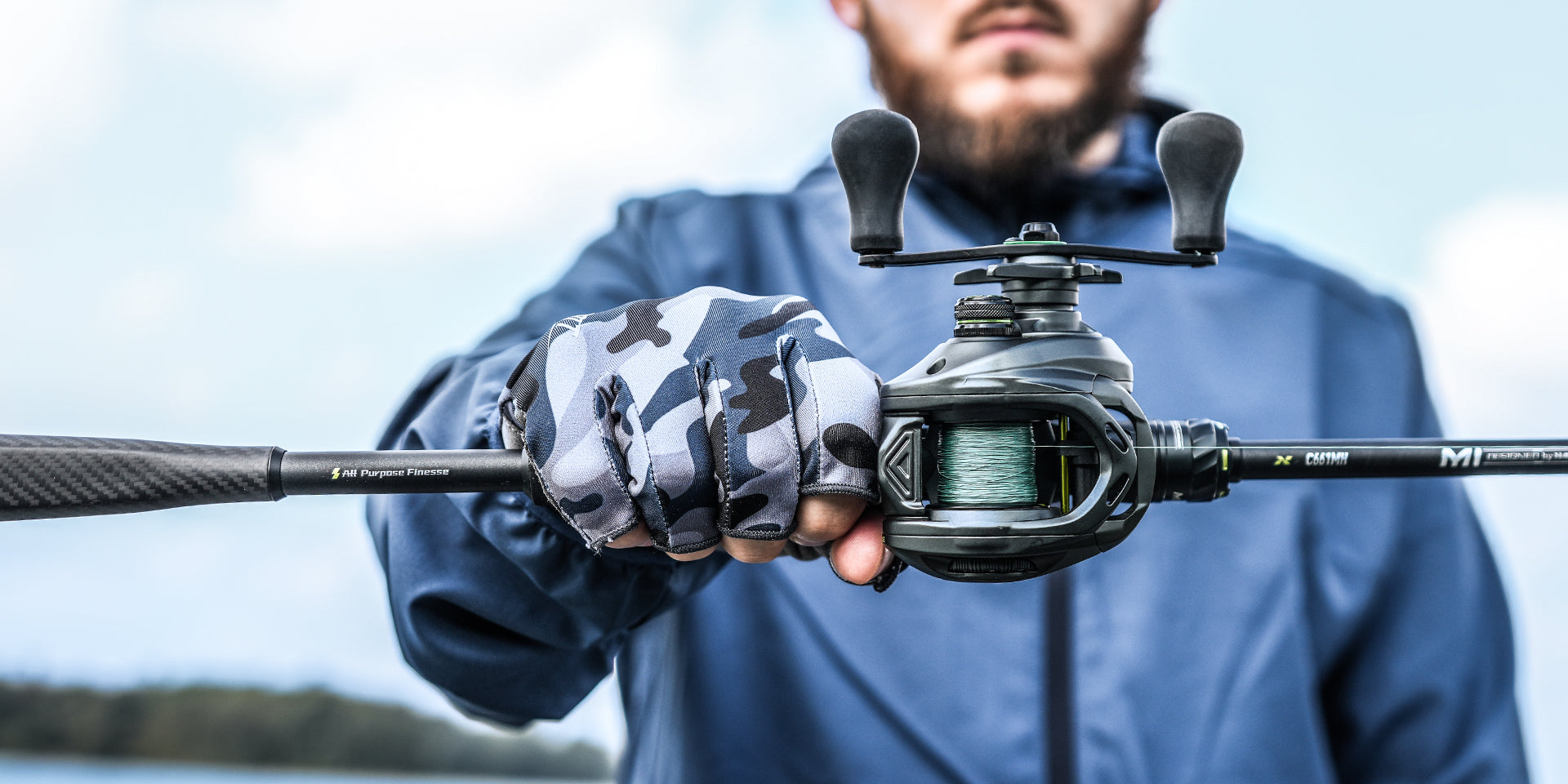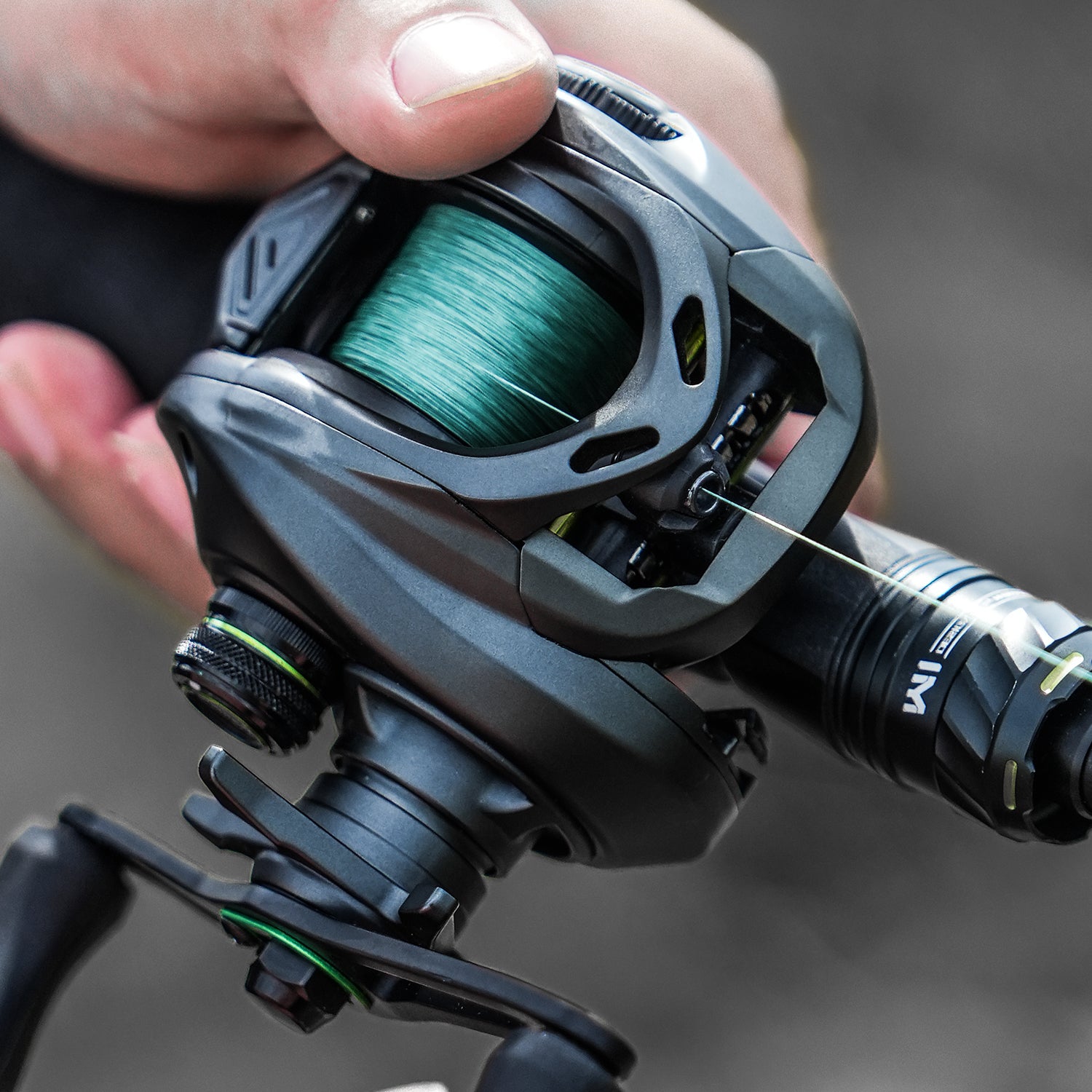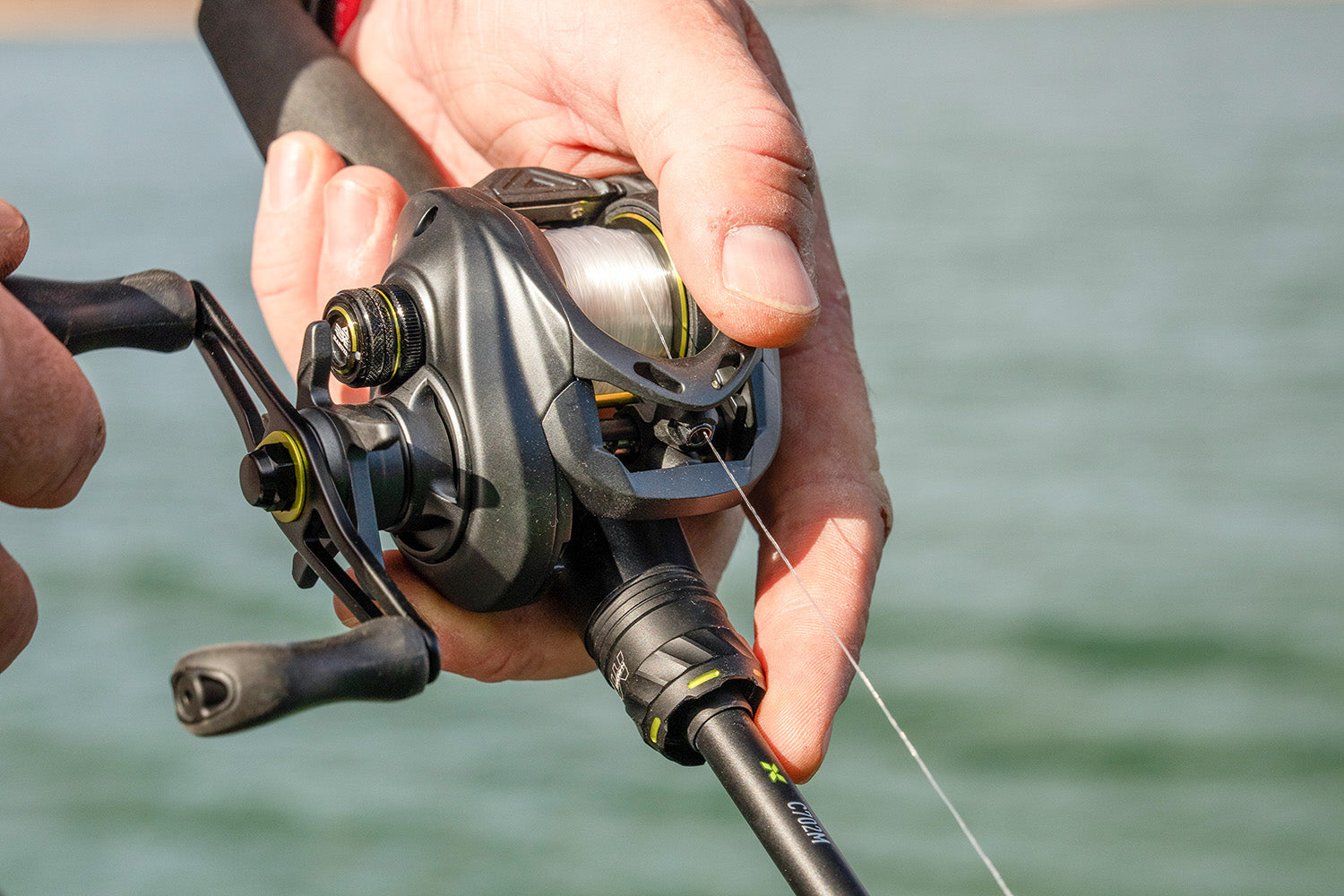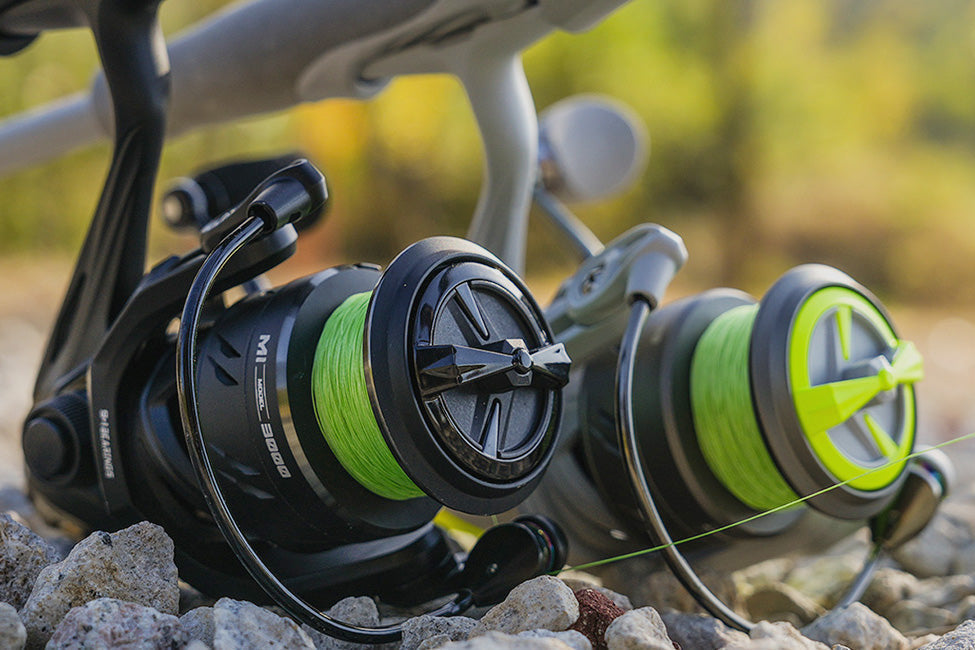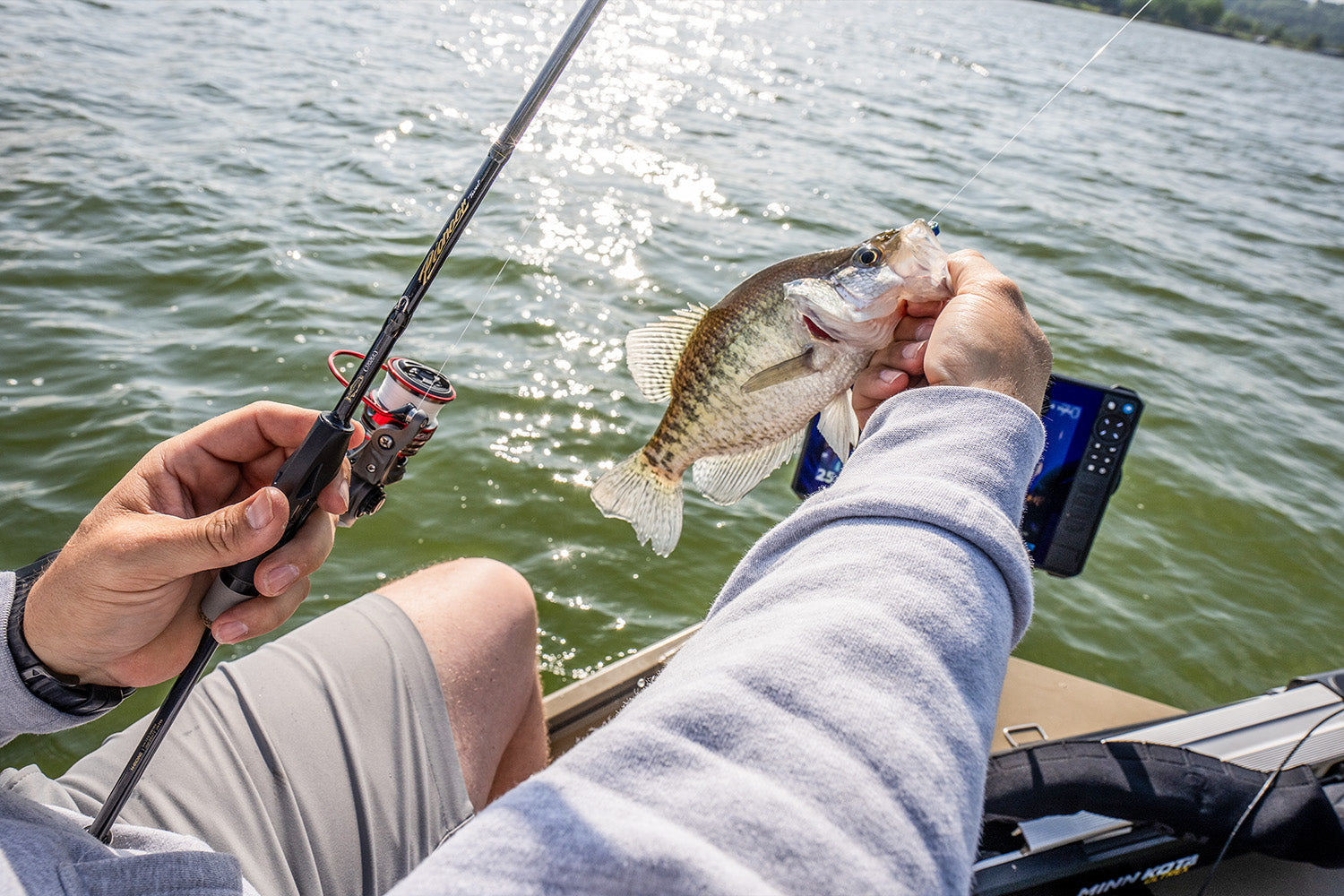Few things are worse than seeing a huge fish break your line and disappear. What's usually to blame? Often, it's your drag being set wrong. Adjusting your fishing reel's drag properly is super important for catching fish, but lots of people don't pay enough attention to it.

What Is Fishing Reel Drag?
The drag is how much your reel resists when a fish pulls the line out. It's like a controlled slipping thing that keeps your line from snapping when a fish pulls hard. If a fish takes off, the drag lets the line come out smoothly, instead of just breaking the line right away.
It works with parts inside the reel that rub against each other to make it harder for the spool to turn. You can change how much resistance there is, so you can control how hard a fish has to pull to get the line out.
Different Kinds of Drag Systems on Fishing Reels

Star Drag Systems
You'll mostly find these on baitcasting reels. They have a star-shaped wheel near the handle. Turn the star to tighten or loosen the drag. Bass fishermen like these because you can change the drag quickly while you're fighting a fish.

Front Drag Systems
Most spinning reels use these. The knob to adjust the drag is on top of the spool. These usually work more smoothly and let you make smaller adjustments than rear drag systems. It's also easier to reach the drag when you're fighting a fish because it's right there in front.
Rear Drag Systems
Some spinning reels have the drag knob in the back. These aren't as popular now, but you can still find them on some cheaper reels. They're not as exact as front drag systems, but they still work okay for lighter fishing.
Lever Drag Systems
You'll mostly see these on big offshore reels. They use a lever to adjust the drag. These work the smoothest and are good for catching really big fish, but you don't see them as much in freshwater fishing.
Key Factors That Determine Your Drag Setting
Line Strength: Most Important
How strong your fishing line is should be the main thing you think about. A good rule is to never set your drag to be more than 25-30% of how strong your line is. So, if you're using a 10-pound line, your drag should be about 2.5-3 pounds.
This gives you some extra room for things like if your line is worn, how strong your knots are, and if the fish suddenly pulls really hard.
Fishing Rod: Its Importance
The strength of your fishing rod is key. If you have a weak rod but set the drag too tight, you could break the rod or lose the fish.
Medium-light rods are good for line that's 6-12 pounds, and medium-heavy rods can handle 12-20 pound line. Make sure your drag matches how strong your line and rod are.
Target Fish: Species Consideration
Different fish need different drag settings. Bass are powerful but are very short fighters. Therefore, you can tighten your drag a bit while catching them. Trout are delicate. They need a very light drag so that they do not pull the hook out of their mouth.
When employing larger fish such as pike as targets, your medium drag setting is the best bet. It provides adequate resistance to take care of their initial speed burst, yet allows you to reel them in since they tire themselves out.
Step-by-Step Drag Setting Process
Here's how to set your drag properly:
1. Start with the Basics
A good rule of thumb is to set your drag at about 25% of your line's breaking strength. So if you're using 12-pound test line, try for around 3 pounds of drag pressure. That is a conservative starting point in most fishing situations.
To gauge this, pull the line straight off your reel. It should be giving you good resistance, but you should not have to pull too hard. Like practice, most anglers develop a feel for the right drag tension.
2. Use a Scale for Accuracy
For more accurate settings, utilize a fishing scale. Mount the scale on your line and pull until the drag begins to let out line. Set your drag knob to the point where the scale is at your desired weight. This eliminates the guesswork involved and provides consistent drag.
Practice dragging many times so the drag feels smooth and consistent. A jerky or irregular drag will have you snapping your line at the worst moment.
3. Fine-Tune While You Fish
Your starting drag setting is just an approximation. The actual conditions you will be fishing most of the time will require adjusting based on cover type, how the fish are behaving, and water conditions.
If you are fishing in among heavy cover, you might want to tighten the drag slightly so that fish will not get caught up in snags. When fishing in open water, a loose drag will allow fish to run and tire themselves out naturally.
Pro Tips for Drag Management
Here's some extra advice to keep your drag working its best:
Regular Maintenance Is Key
Keep your drag system working smoothly by cleaning and lubricating the drag washers regularly, especially if you fish in saltwater. Salt buildup can make the drag jerky or even freeze up completely.
Temperature Matters
Cold weather can make drag washers stiffer, while hot weather can make them slip more easily. Always double-check your drag setting when the weather changes a lot.
Adding Extra Pressure When Needed
Sometimes, you need more stopping power than your drag is set for. If you're using a spinning reel, you can gently put your finger on the edge of the spool to add resistance. With a baitcasting reel, you can palm the spool for more control.
These techniques take practice to get right. Too much pressure can snap your line instantly, while too little won't do much to help you control the fish.
Listen to What Your Reel is Telling You
The sound of your reel can tell you a lot when you're fighting a fish. A smooth, steady whirring sound means the drag is working properly. Grinding or stuttering sounds mean it's time for maintenance or that you're putting too much pressure on the reel.
Pay attention to how the drag sounds when you're fighting different sizes of fish. This will help you recognize when you need to adjust the drag in the middle of a fight.
Common Drag Setting Mistakes to Avoid
Many anglers make the mistake of setting their drag too tight, thinking that more pressure equals more control. But this often leads to more broken lines than landed fish. Fish can make sudden, powerful runs, and you need the drag to release line to prevent a break-off.
Another common mistake is never checking the drag settings. Drag can change over time due to temperature, humidity, and normal wear. What worked great last month might be completely off today.
Also, remember to factor in the strength of your knots. Knots are usually weaker than the line itself, so keep that in mind when setting your drag.
Advanced Drag Strategies
Different lures and fishing techniques work best with specific drag settings. For example, when using crankbaits, a slightly looser drag helps prevent the fish from using the resistance of the lure to throw the hook. With soft plastics and jigs, a moderate drag helps with solid hooksets while still allowing the fish to run.
Water temperature also plays a role. Fish in cold water fight differently than fish in warm water, so you might need to adjust your drag accordingly.

Start Landing More Fish Today
Setting your drag properly isn't hard, but it does take a little practice and attention to detail. Start with the 25% rule, use a scale to get accurate, and adjust your drag based on the conditions you're actually fishing in. Keep your gear in good shape with regular maintenance, and listen to the sounds your reel makes. Get out there and practice these tips – you'll definitely see an improvement in the number of fish you land!


